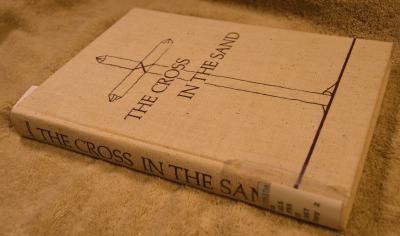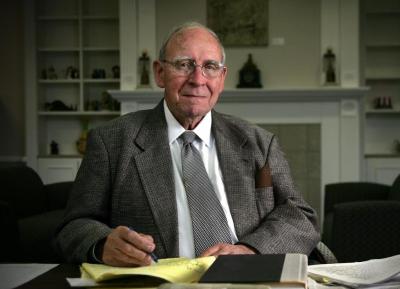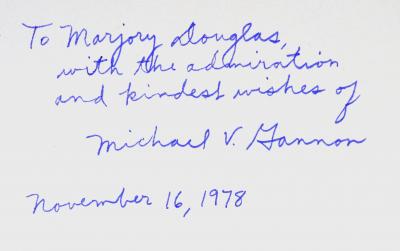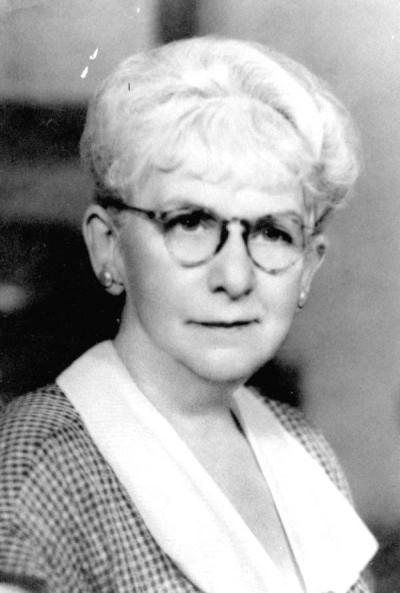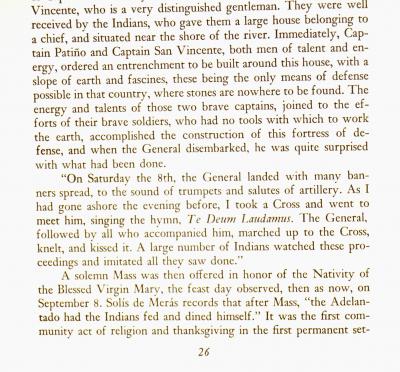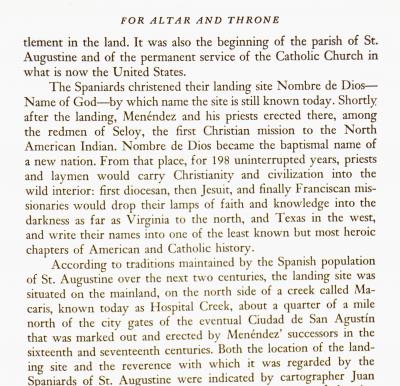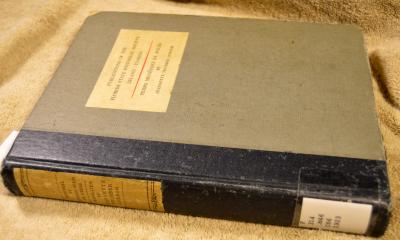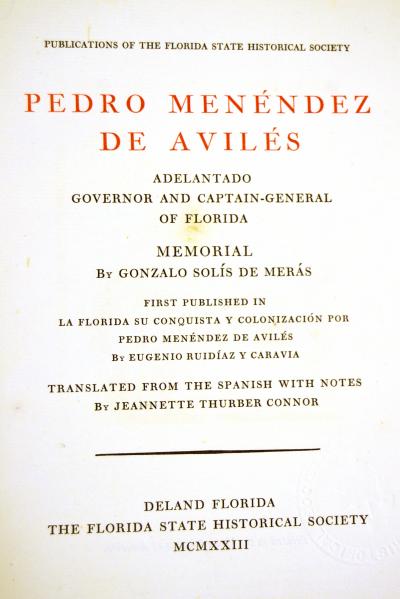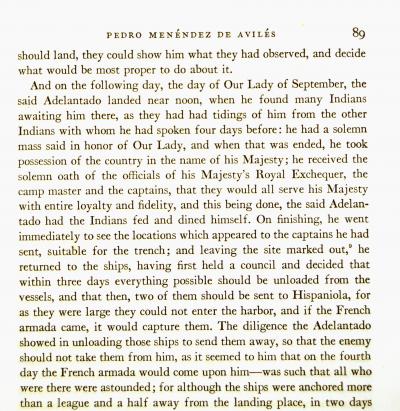55 years before the Mayflower Pilgrims set foot in Plymouth Colony, Spanish explorers and Native Americans in St. Augustine, Florida, shared a celebratory meal some describe as the ‘real first’ American Thanksgiving. Two books in the collection of the Library of Florida History in Cocoa offer early accounts, including insights into the menu.
Spanish Captain General of the Indies Fleet and Adelantado of Florida Pedro Menendez de Aviles landed at the village of Seloy on September 8, 1565, and re-named the area St. Augustine.
There are two written narratives of the events. One comes from the diary of the chaplain on the voyage, Father Francisco Lopez de Mendoza Grajales. The second was written by the voyage’s physician, Dr. Gonzalo Solis de Meras , Pedro Menendez’s, brother- in- law.
One of the sources at the library is a 1967 Second Edition of The Cross in the Sand
by noted Florida Historian Michael V. Gannon (1927-2017), [2010 photo courtesy the Gainesville Sun],
and inscribed by him to Marjory Stoneman Douglas (1890-1998).
Of the landing and meal Gannon writes, first quoting Father Lopez: “On Saturday the eighth the General landed with many banners spread, to the sounds of trumpets and the salutes of artillery. As I had gone ashore the evening before, I took a cross and went to meet him, singing the hymn Te Deum Laudamus. The General, followed by all who accompanied him, marched up to the cross, knelt and kissed it. A large number of Indians watched these proceedings and imitated all that they saw done.”
Father Lopez then offered mass, and after it was completed, Pedro Menendez hosted a meal of thanksgiving and invited the native Timucuan People to participate. It is likely the Spanish would have served a stew of salted pork and garbanzo beans laced with garlic, accompanied by hard sea biscuits and red wine. If the natives contributed food, it was likely turkey, venison, gopher tortoise, mullet and other fish, corn, beans and squash. It is easy to see which selection survived the test of time.
Gannon also writes: “It was the first community act of religion and thanksgiving in the first permanent (European) settlement in the land.”
The second account Gannon quotes, written by Solis de Meras, was published in Spain shortly after the trip, 1567. But was then lost and not fully published till 1893 and then only in Spanish.
In 1923 Florida historian Jeannette Thurber Connor (1872-1927) translated the entire account into English. That is what Gannon used and it is still the only English translation of that eyewitness account.
Solis de Meras confirms the dinner, or at least that Pedro and the Indians ate, but he quickly moves on to the fortifications and plans to deal with the French forces thought to be in the area.
As brief as that mention may be, it is a second source to confirm St. Augustine’s claim to be not only the oldest city in America, but the site of the oldest Thanksgiving.
